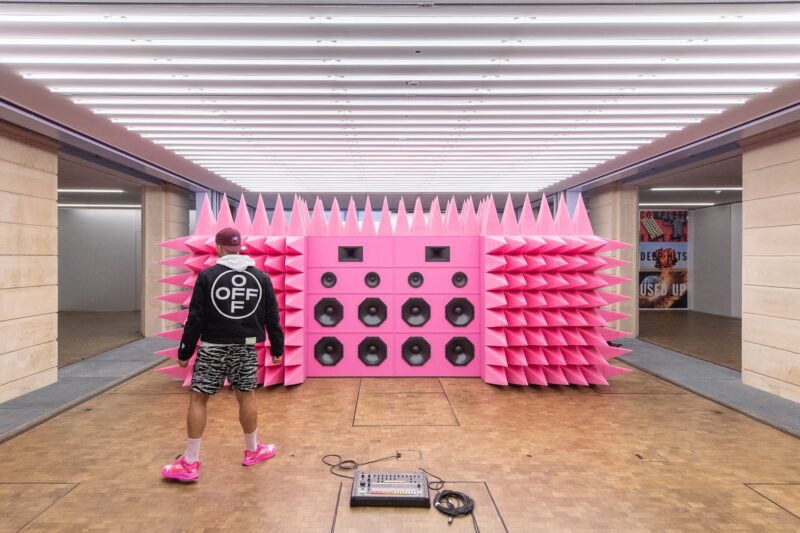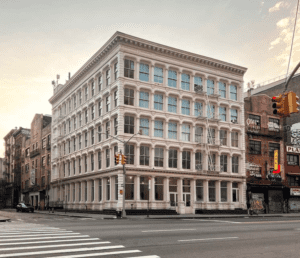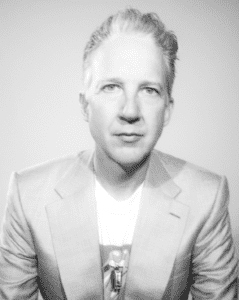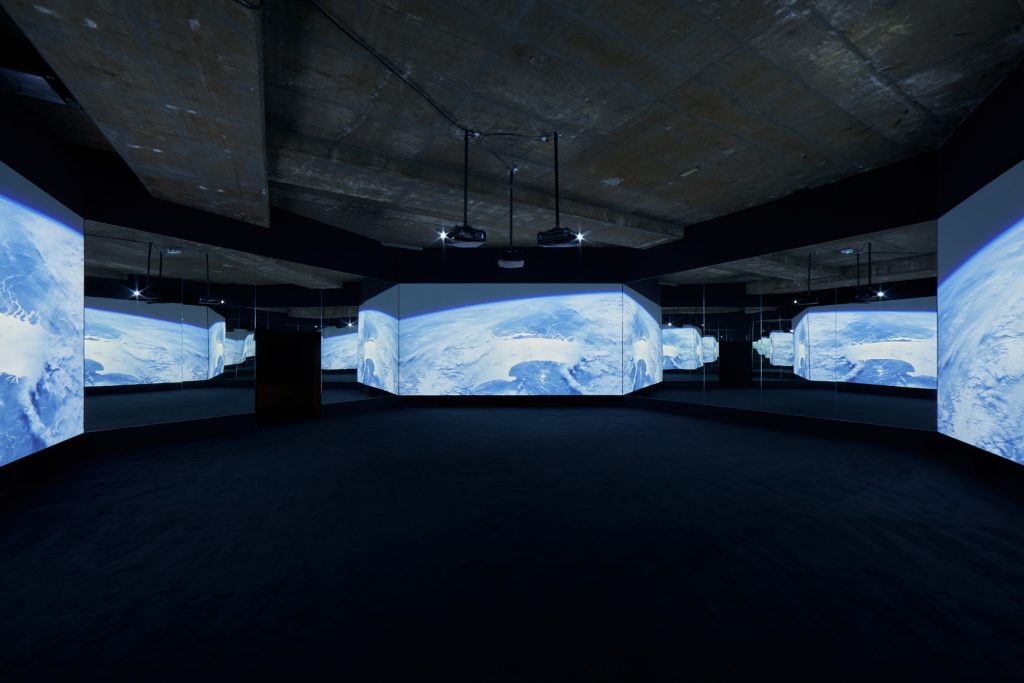
Doug Aitken Installation shot
Jefferson Hack and I managed to catch up at the start of London Frieze Week. We spoke about his new exhibition, TRANSFORMER: A Rebirth Of Wonder, which he curated at 180 Strand. The exhibition is an immersive journey through a collection of transformative stories with each a different cultural reference point. Hack speaks to us about the relevance of the building at 180 Strand that he calls a “vortex of energy”, as well as his thoughts behind the spectral of narratives that are presented, and artists being a “warning system” for culture.
MW : So how did it happen? How come you’re curating this show?
JH: Well I was invited by Store X and by The Vinyl Factory,
MW : About a year ago
JH: Yes, it started a year ago and the, the idea was to commission a lot of work from artists who were really kind of storytellers, and myth makers, and world builders, and we’re looking at kind of culture prismatically, I think that kind of image that we’ve used for the show of the fallen — kind of a mirrored column from the nightclub, you know, that is spectral. It kind of speaks to this idea of intersectionality, multiplicity, a plurality that’s so much a part of present conversation. And we were really– I was really interested in that from a point of view of multiplicity when it comes to issues of race and gender and identity. And so, the show is politicised but it’s not overtly political.
MW : Yes.
JH: And we started really with a survey of the site so, you know, “We’re here, we’re in Temple, we’re on the Temple side of the building” and I – through the kind of– we commissioned a ley line survey, a historical survey and we discovered all of these kinds of rich, narratives in a sense that we’re right on the crossing of several very powerful ley lines. There’s an ancient pagan holy well.
MW : Yup.
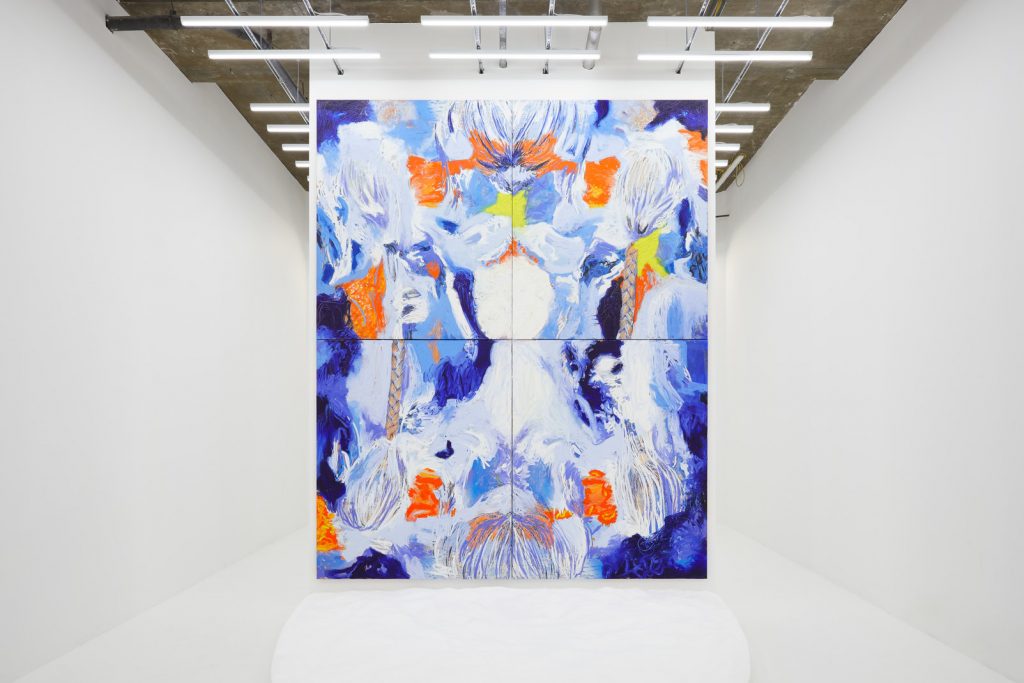
Donna Huanca Installation shot
JH: The Well of St Clements and this site itself was a monastery, an ancient monastery, so there’s these thematics of worship, ritual, healing that were in the narrative of the building already and when I shared that with artists it just became very clear that they— A lot of the artists connected to that —were very interested in ideas of spiritual transformation and personal transformation as a sort of beginning of cultural and political transformation. So, the idea of, you know, working with artists at a real– We had a– We’re kind of mediators of their own communities, that were coming from all over the world. I was very interested in having– In representing artists that not only worked in different media but also came with different cultural, reference points.
MW : Yes.
JH: And, you know–
MW : Did you go overseas in Asia?

Evan Ifekoya Installation shot
JH: I would say in their biographies, their biographies are very mixed like Sophia Al Maria has a biography from the Middle East, Donna has a biography from South America, but I think that their stories are very nuanced so I think all of these stories are really about a more kind of nuanced look at what multiplicity means for them. And that was important for me that there’s this sense of no fixed position and I think Doug Aitken’s work is kind of a centrepiece of the show because it was the only existing work in the show.
MW : So you got 10 new commissions?
JH: 10 new commissions.
MW : And was that easy? Did you work directly with the artists?
JH: Doug’s work is about the first mobile phone call ever made. So, it’s this moment in 1973 when he interviewed the creator, Martin Cooper, of the technology, the scientist who invented the technology for Motorola to make that first mobile call. And it is the beginning of accelerations of– It’s the beginning of multiplicity, it’s the beginning of neural networks a time, a moment when we can now be in multiple places at once, you know, simultaneously. And so– And it’s also the battle between humanity and technology, nature and technology as well.
–
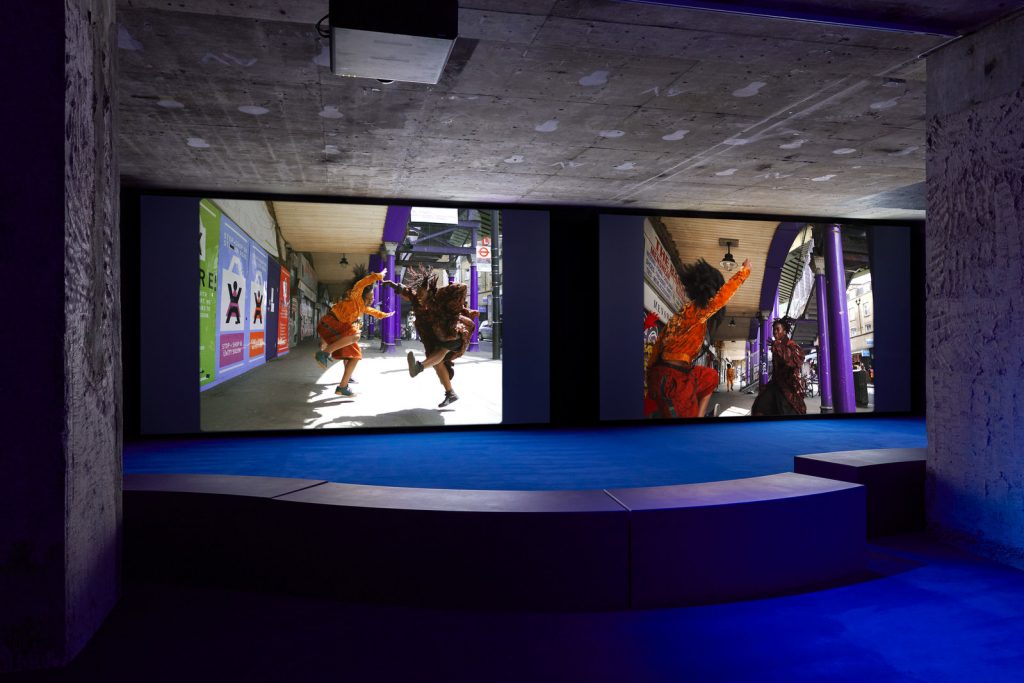
Installation shot Transformer Jenn Nkiru
So that idea of this kind of hyper acceleration which leads to hyper individuality, that leads to plurality and sense of no fixed position was quite, was very important to the show. I think that ancient history of the space, what I wanted to do was kind of in the exhibition-making was really frame these storytellers with this idea of a kind of subterranean journey, so you go down, down. You go into the depths of the building because it’s only by going underground into the under land that you can connect with that history and reactivate the energy potential of the building. It really has an energy vortex, there’s a kind of vortex of energy which this building has been in the past through ritualising the exhibition-making, it reactivates that energy as a potential for transformation.
MW : It’s interesting because–
JH: So, we used the building as a found object, really wove the story through the architecture of the building, so you don’t know if you’re between worlds or not, you know?
MW : But it’s interesting how stories can get hidden because if you look at this building you wouldn’t know, it’s history, would you?
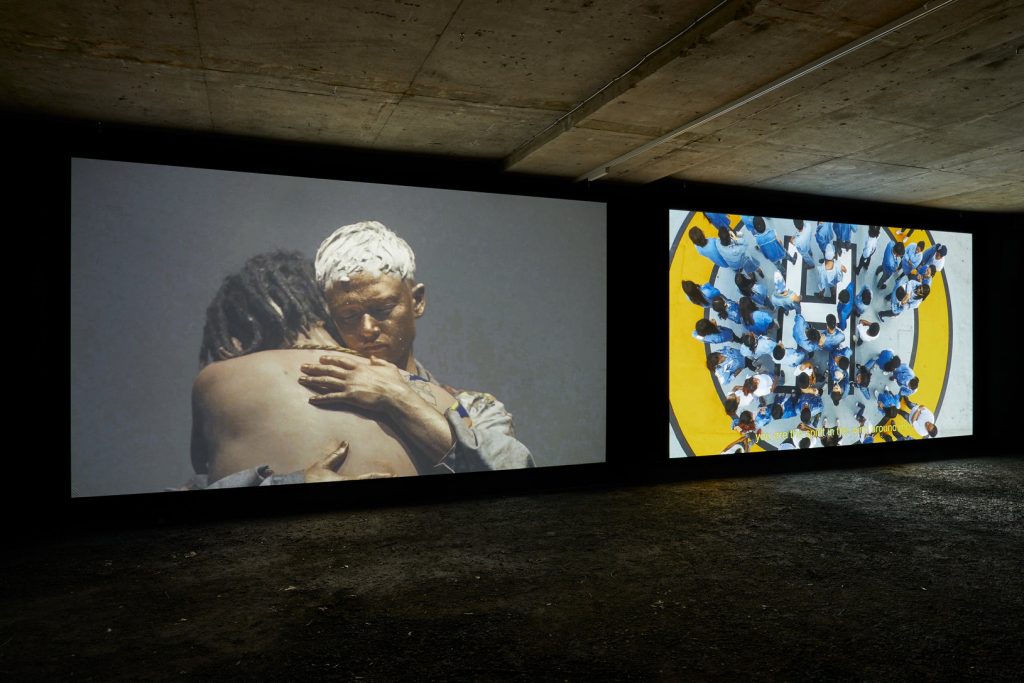
Installation shot Transformer Korakrit Arunanondchai
JH: Yes. But I think this idea, it’s kind of about echoing the idea of sacred spaces and sacred places and I think that temples are, you know, in every- in every belief system in the world a temple is a place for contemplation, reflection for um, mythologizing and so this idea of using this space as a temple complex, in a way, for each artist to be able to morph with their own conditions of their own space so that we’re really going through a series of monographic works in a lineal progression was very important to me so that each one was a point of reflection and contemplation. So, this story of rebirth is really kind of central to the whole show.
MW : And have you, have you changed doing this? Working with these artists? Seeing their stories?
JH: Massively, massively, yes. Massively changed, you know I feel um–
JH: I feel charged.
MW : Good.
JH: Re-energized, charged and hopeful. I think this kind of– I think we’re living in such chaotic and dark times–
JH: We’re living in such chaotic and dark times that it’s very easy to feel paralysed and kind of like a stasis and I think this– The line from– That we use in the show, the rebirth of wonder comes from Ferlinghetti’s poem from the ’60s which was all about this stasis, this kind of, you know, this kind of political confusion that you can’t feel. How can consciousness break through into a rebirth of wonder, and how can we effect positive social change.
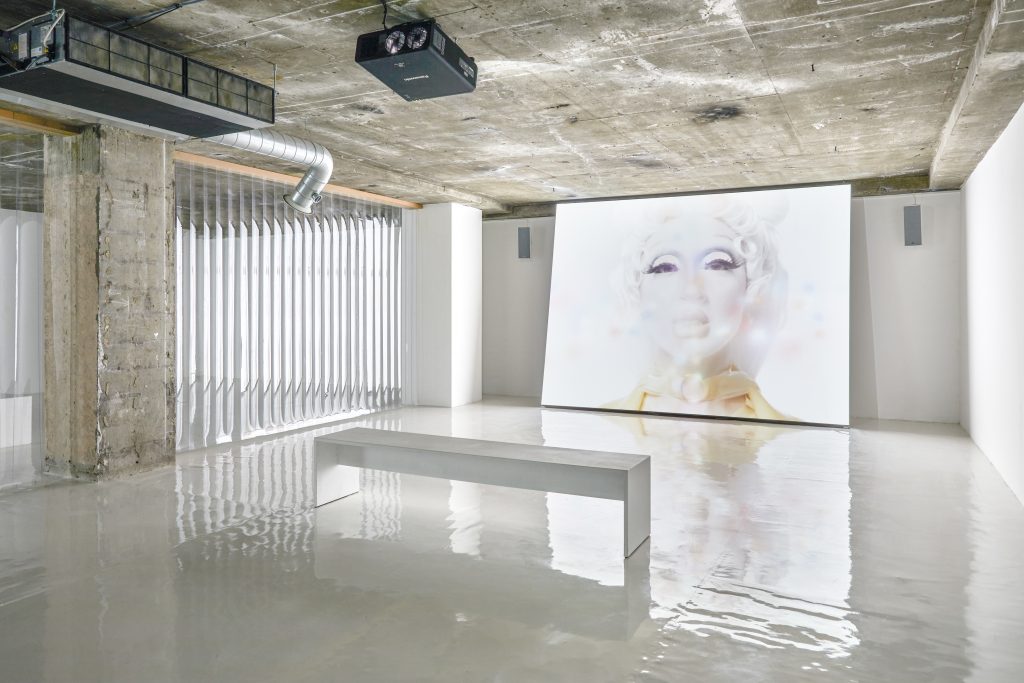
Transformer Al Maria & Victoria Sin
MW : So if people are feeling then negative and a bit down, and a bit–
JH: You come here.
MW : –like there’s no future they need to come here.
JH: Yeah but it’s also that Marshall McLuhan absolutely– and it’s that Marshall McLuhan quote that we were talking about earlier which is that artists are the early warning system for culture, you know and they really are the torch bearers that shine the way on what’s going to come next. I think these artists are so intensely focused on the present but they’re writing new mythologies for the future as a result.
MW : Because it’s easy to forget that Brexit is just a sideshow to what’s really going on.
JH: It’s true.
MW : Changes and battles ahead.
JH: I think for me, you know, this show’s a lot about personal transformation, about how the personal transformation affects the transformations of communities that then affect the transformation of the social and political sphere. So, you’re starting yourself, so it’s a journey of self-discovery that leads to more possibilities, more potentialities.
MW : Cool.
TRANSFORMER: A Rebirth of Wonder until December 8th, 2019 180 The Strand, London, WC2R 1EA Featuring work by Doug Aitken, Sophia Al-Maria & Victoria Sin, Korakrit Arunanondchai, Donna Huanca, Juliana Huxtable, Evan Ifekoya, Dozie Kanu, Quentin Lacombe, Lawrence Lek, Jenn Nkiru, Chen Wei and Harley Weir & George Rouy.
Free Entry Opening times: Tuesday – Sunday: 12pm – 7pm Tuesday – Saturday 12pm – 6pm Sunday
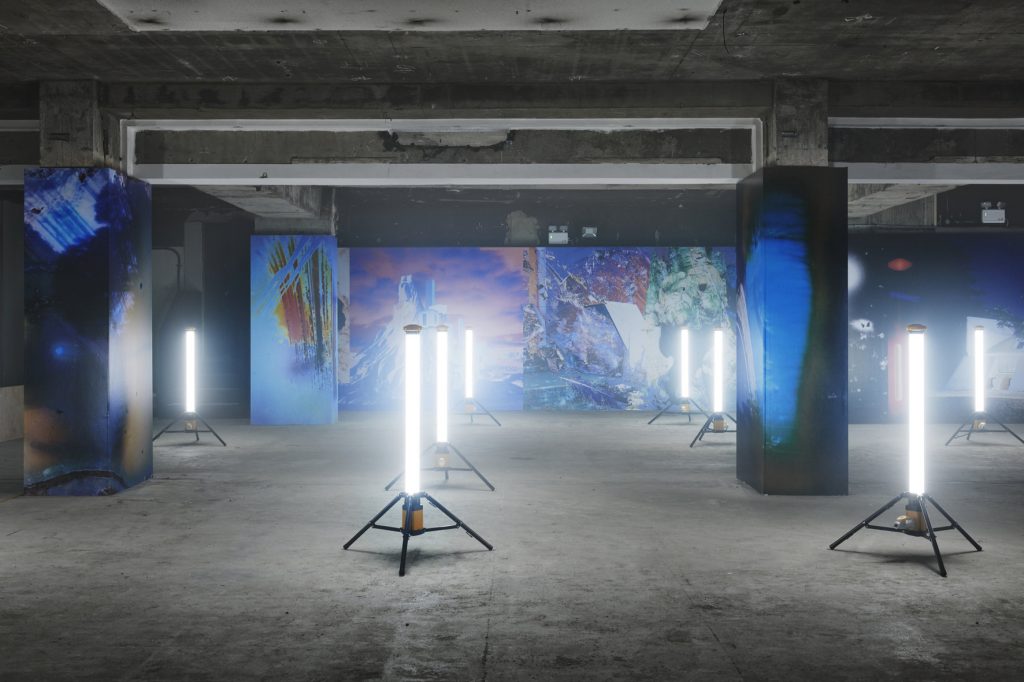
Installation shot Transformer Quentin Lacombe Transformer

